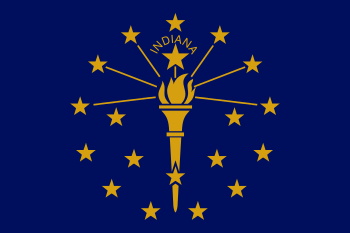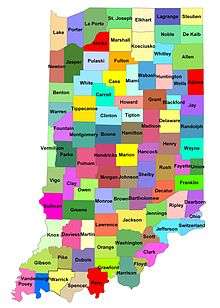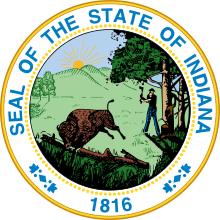Fort Miami (Indiana)
| Fort Miamia | |
|---|---|
| Fort Wayne, Indiana | |
|
Map of Fort Miami | |
| Type | Fort |
| Site information | |
| Controlled by | New France |
| Site history | |
| Built | 1715 |
| In use | 1715-1760 |
| Battles/wars | |
 | |
| Location | Fort Wayne, Indiana |
| Coordinates | 41°03′03″N 85°04′52″W / 41.05083°N 85.08111°WCoordinates: 41°03′03″N 85°04′52″W / 41.05083°N 85.08111°W |
| Area | 23.75 acres (9.61 ha) |
| NRHP Reference # | 10000944 |
| Added to NRHP | November 26, 2010 |
Fort Miami, originally called Fort St. Philippe or Fort des Miamis, was a French palisade fort built in 1715 at Kekionga, a large Miami Indian village founded where the St. Joseph River and St. Marys River merge to form the Maumee River in northeastern Indiana, near the Ohio border. The Miami refused to abandon their village and move farther West, away from British traders,[1] so Governor Philippe de Rigaud Vaudreuil authorized Jean Baptiste Bissot to build a strong fort to protect the trade routes of New France.
The original fort served as a successful trading post until 1747, when English-allied Huron warriors under Chief Nicholas found it undermanned—the commandant, Ensign Douville, and most of the soldiers were away at Fort Detroit. The fort was sacked and burned to the ground.[2]
In Summer 1749, a force of French and Indians under Captain Pierre Blainville rebuilt the fort. This second fort survived the French and Indian War, but it was attacked in 1752, and two soldiers from the French garrison were caught outside the fort and killed.[3] In November 1760, at the close of the French and Indian War, the French garrison formally surrendered Fort Miami to Ensign Holmes of the Kingdom of Great Britain.[3] The British soon lost control of the fort in 1763, during Pontiac's Rebellion, and the fort was destroyed by the Indians.
The British refortified the town, and the trading post again became successful. It was sacked in 1780 by a force under Augustin de La Balme, a French cavalry officer who came to the new United States of America to assist with the American Revolutionary War. The force raided the stores, but was soon destroyed by Miami Chief Little Turtle, and the goods were returned.[4] The coalition at Kekionga remained true to their British allies even after the area was ceded to the United States at the close of the war. It therefore became a target of American armies, leading to several noteworthy Indian victories now known as the Northwest Indian War. One such battle, Hardin's Defeat (1790), occurred within sight of the fort. The Northwest Indian War ended with the Battle of Fallen Timbers, where General Anthony Wayne finally achieved an American victory.
The fort was later occupied by forces under Gen. Wayne in 1794, and rechristened Fort Wayne, the fort which gave the name to the settlement and became the modern city of Fort Wayne, Indiana.
Notes
- Allison, Harold (1986). The Tragic Saga of the Indiana Indians. Turner Publishing Company, Paducah. ISBN 0-938021-07-9.
- Poinsatte, Charles (1976). Outpost in the Wilderness: Fort Wayne, 1706-1828. Allen County, Fort Wayne Historical Society.



